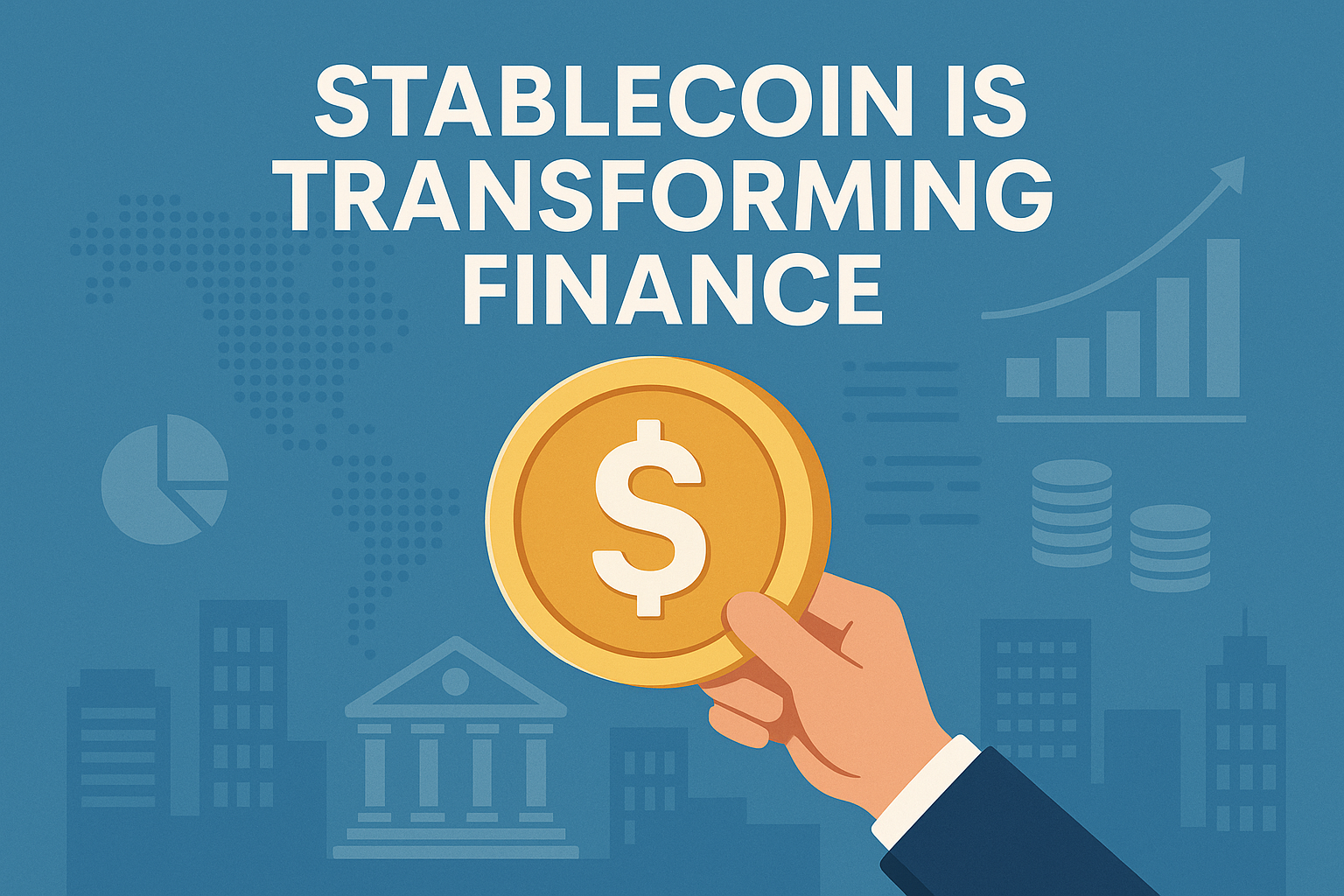
In the ever-evolving landscape of digital finance, stablecoins have quietly emerged as one of the most promising and disruptive innovations. As cryptocurrencies like Bitcoin and Ethereum experience dramatic price swings, stablecoins offer a digital alternative tied to more predictable assets, such as fiat currencies or commodities. This unique hybridization of traditional and digital finance gives stablecoins enormous potential—not just as a bridge between the old and new monetary worlds, but as a foundation for a range of new financial products and services.
What Are Stablecoins?
At their core, stablecoins are digital tokens whose value is pegged to an underlying asset. The most common are fiat-collateralized stablecoins, which are backed one-to-one by reserves of dollars, euros, or other government currencies. For example, USD Coin (USDC) and Tether (USDT) are both pegged to the US dollar and are among the most widely used in the global crypto ecosystem.
There are also commodity-backed stablecoins (like those linked to gold) and algorithmic stablecoins, which use smart contracts to adjust supply and maintain a stable value. This variety allows stablecoins to cater to different investor needs, risk tolerances, and regulatory environments.
The Case for Stablecoins in Global Finance
Stablecoins are not just a technical innovation—they represent a paradigm shift in how people think about money movement and value storage. In regions where access to the banking system is limited or where inflation erodes the value of local currencies, stablecoins offer a safe haven and an on-ramp to global markets. They enable instant, low-cost cross-border transfers, making remittances faster and less expensive than traditional wire services.
For institutional players, stablecoins are increasingly used as a settlement layer. Many crypto exchanges and DeFi platforms settle transactions in stablecoins, reducing the friction and volatility risk associated with transacting in Bitcoin or Ethereum. The use of stablecoins as a unit of account is steadily growing, and their role as a liquidity source is crucial for the operation of digital asset markets.
Expanding Use Cases: Payments, DeFi, and Beyond
Beyond simple transfers, stablecoins are fueling innovation in decentralized finance (DeFi). Users can earn yield by providing liquidity to protocols, borrow against their stablecoin holdings, or participate in complex financial instruments without relying on traditional banks. In countries where capital controls restrict access to foreign currencies, stablecoins are increasingly used as a digital dollar substitute.
Businesses are beginning to adopt stablecoins for payroll, supplier payments, and international commerce. Their programmability—enabled by smart contracts—allows for conditional payments, instant settlement, and automated compliance, opening up possibilities for supply chain finance and real-time B2B transactions.
Challenges and Regulatory Headwinds
Despite their promise, stablecoins face significant hurdles. Regulatory agencies in the US, EU, and Asia are scrutinizing how these tokens are issued, audited, and managed. Transparency regarding reserves, operational resilience, and compliance with anti-money-laundering standards remain pressing concerns. If the underlying assets are not fully backed, or if the issuer faces liquidity crises, the peg can fail, undermining trust in the entire stablecoin ecosystem.
The collapse of algorithmic stablecoins, such as TerraUSD in 2022, highlighted the risks of experimental designs and the need for robust oversight. Nonetheless, leading issuers like Circle, the company behind USDC, have made significant strides in transparency, regulatory engagement, and operational best practices. Circle is even exploring a public listing, which could bring new levels of scrutiny and legitimacy to the stablecoin sector (NYSE: CRCL).
The Role of Stablecoins in the Future of Digital Assets
As central banks worldwide explore the launch of central bank digital currencies (CBDCs), the distinction between state-backed digital money and private stablecoins is becoming a crucial policy question. Some analysts predict that CBDCs and regulated stablecoins will coexist, offering complementary benefits in terms of access, programmability, and speed.
Looking ahead, the integration of stablecoins into mainstream finance could accelerate financial inclusion, unlock trillions in global liquidity, and even reshape how central banks conduct monetary policy. With programmable money, entirely new markets and services can emerge, from automated micro-payments to real-time tax collection.
Conclusion: Stablecoins as the Linchpin of a New Financial Era
The potential of stablecoins is vast, but their success will depend on responsible innovation, regulatory clarity, and continued investment in security and transparency. If these challenges are met, stablecoins may become the backbone of global finance—combining the trust and stability of fiat currencies with the efficiency and reach of digital technology.
Disclaimer: This article is for informational purposes only and does not constitute financial advice or a recommendation to invest in any specific asset, token, or company. Always conduct your own research and consult with a qualified financial advisor before making investment decisions.






